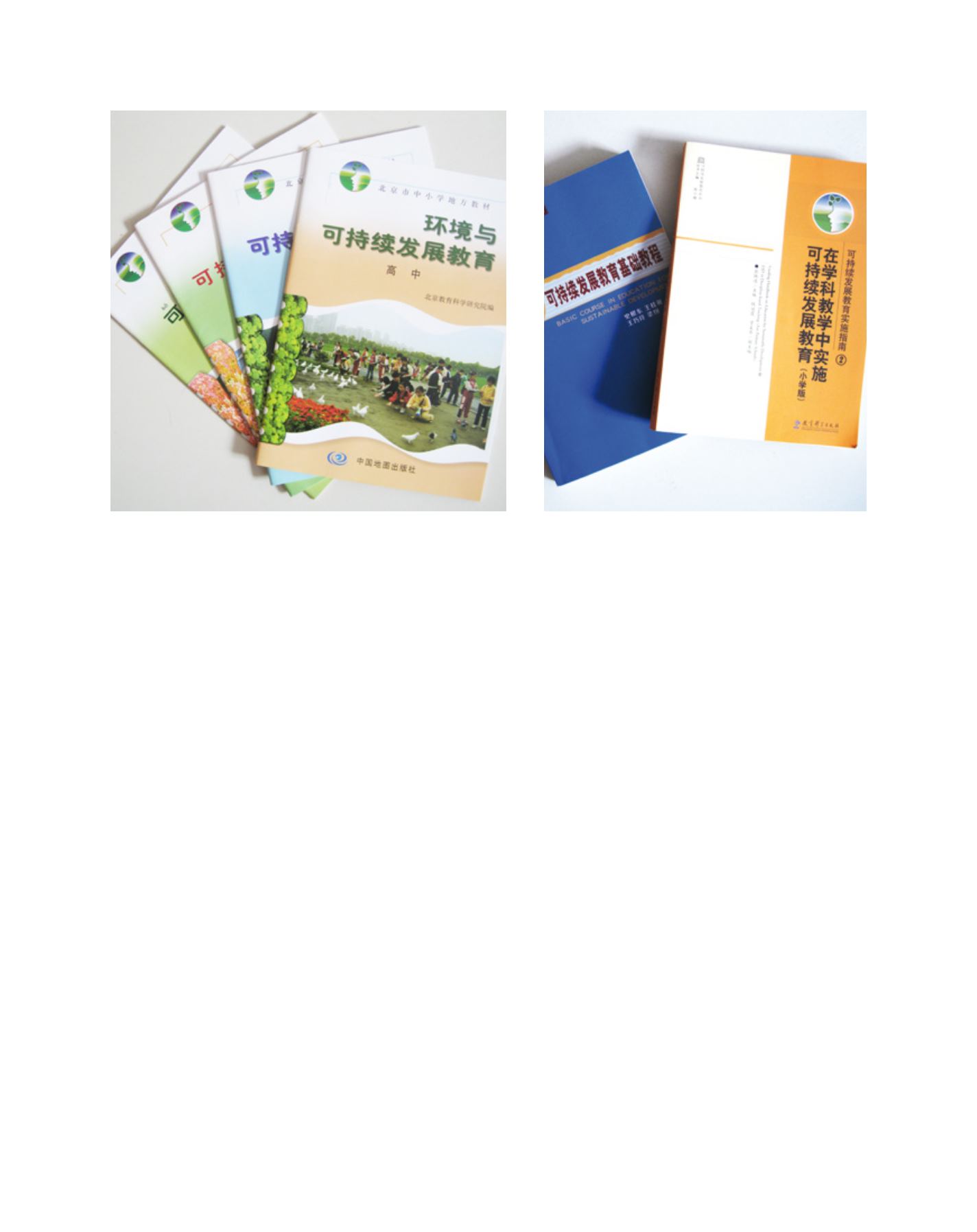

[
] 60
and legal documents to promote the creative process of ESD to meet
the needs of the local socio-economic environment and culturally
sustainable development.
For many years, the ESD project group has helped local education
authorities to clearly understand the local educational situation and
development plan, and to discuss and analyse what kinds of educa-
tion are badly needed to meet the sustainable development of local
societies, economies, environments and cultures. The group has
also organized educational experts to conduct research and design
ESD programmes to benefit regional educational development; and
developed their respective focuses on promoting ESD in accordance
with their different situations, with the aim of carrying out ESD
projects more effectively.
Curricula and teaching methods should be constituted with
distinctive features of ESD
The fourth creative characteristic of ESD in China is that of using the
idea of sustainable development to examine and rethink the advan-
tages and disadvantages of existing curricula and teaching methods
in an attempt to constitute new ESD curricula and teaching methods
with distinctive Chinese features.
At present, the UNESCO China National Working Committee
has instructed both teachers and students to jointly tap relevant
ESD knowledge in the existing textbooks of different disciplines.
The committee has compiled a book entitled
Implementing ESD in
Discipline Teaching
and guided teachers to expand ESD content in
the existing curricula. The project group has also stuck to the teach-
ing principle of “exploring the main disciplines by comprehensive
infiltration and cooperative research to gain knowledge for the sake
of application”.
The project group has clarified the target positioning of ESD in
local curricula and textbooks – environment and ESD for Beijing
primary and middle schools – and about 300 local school text-
books are now widely used in some 1,000 primary and
middle schools in Beijing.
ESD demonstration schools should be established
in combination with energy conservation and
carbon reduction
The fifth creative characteristic of ESD in China is
that China has established energy-saving and emis-
sion-reduction schools while promoting sustainable
development ideas, which has helped transform
schools from resource-consumption into energy-
saving and emission-reduction sample bases while
raising the students’ awareness of solutions to the
problems that occur in the process of sustainable
development.
The UNESCO China National Working Committee
has launched a social action project, ‘Energy Saving
and Emission Reduction and Schools of Sustainable
Development’ in Beijing and some other provinces
and cities. Through carrying out such activities as
learning actions, creation actions, supervision actions
and talk actions, we have raised teenagers’ awareness
of energy saving, emission reduction and sustainable
development, and organized teenagers to partici-
pate in technical renovations. The project group has
also mobilized the students to care about and take
part in activities to create energy-saving and emis-
sion-reduction families, communities, enterprises
and organizations and instructed the primary and
middle school students to put forward proposals and
suggestions to local government. In this way, a large
number of schools, teenagers and teams have become
energy-saving and emission-reduction pace setters.
Materials on environment and ESD for Beijing primary and middle schools
Image: Nat. Comm. UNESCO China
ESD content is being expanded in existing curricula
Image: Nat. Comm. UNESCO China
















